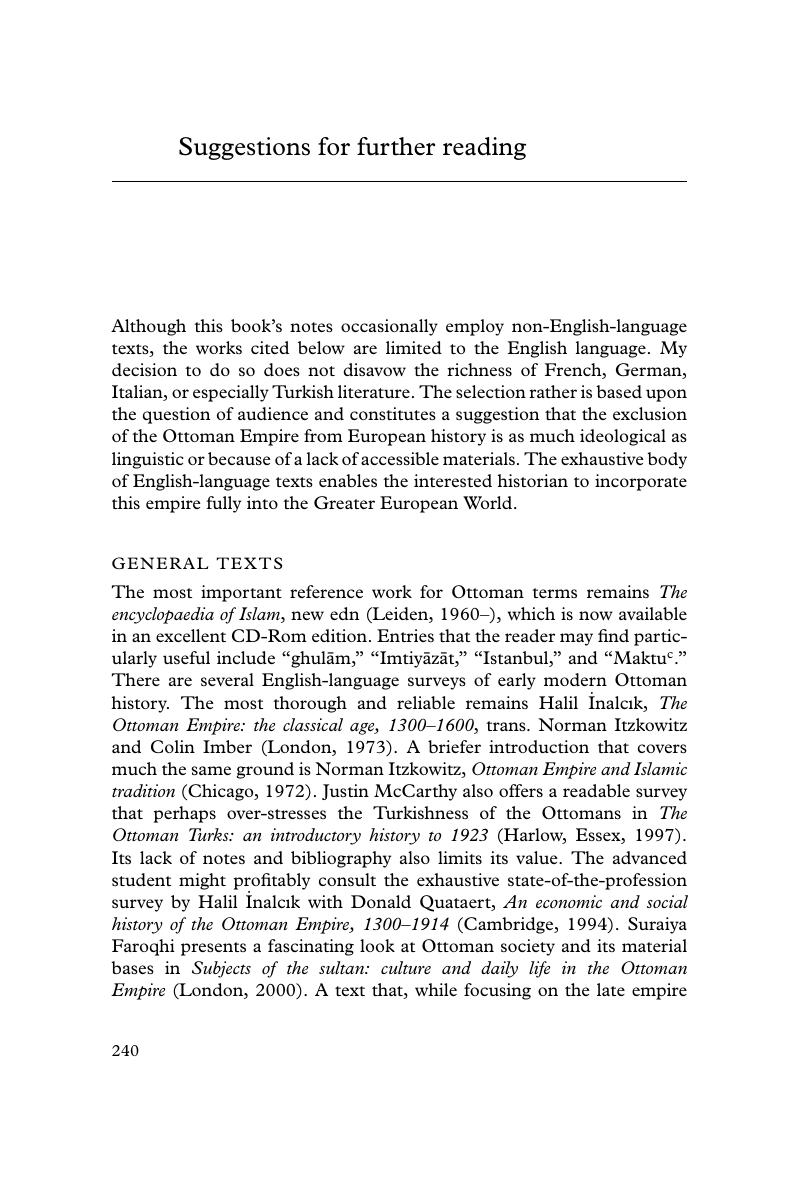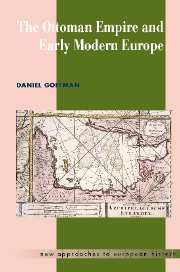The seventeenth-century crisis, and especially its social aspects, has received much attention in recent years. An organizing model that may apply to Ottoman decentralization is presented in Frederic C. Lane, “The economic consequences of organized violence,” Journal of Economic History 18(1958): 401–17. Suraiya Faroqhi's “Crisis and change, 1590–1699,” in An economic and social history of the Ottoman Empire, 1300–1914, ed. Halil İnalcık, with Donald Quataert (Cambridge, 1994), pp. 411–636, is a good place to start for the Ottoman case. This summation should be complemented by Halil İnalcık, “Military and fiscal transformation in the Ottoman Empire, 1600–1700,” Archivum Ottomanicum 6(1980): 283–337; the many articles by Ronald Jennings, particularly his “Urban population in Anatolia in the sixteenth century: a study of Kayseri, Karaman, Amasya, Trabzon, and Erzerum,” International Journal of Middle East Studies 7(1976): 229–58; and his “Kadi, court and legal procedure in seventeenth-century Ottoman Kayseri,” Studia Islamica 48(1978): 133–72; Şevket Pamuk, “The price revolution in the Ottoman Empire reconsidered,” International Journal of Middle East Studies 33.1(2001): 68–89; as well as Suraiya Faroqhi's Towns and townsmen of Ottoman Anatolia: trade, crafts and food production in an urban setting, 1520–1650 (Cambridge, 1984). A sociological model that links provincial unrest and the state apparatus is Karen Barkey, Bandits and bureaucrats: the Ottoman route to state centralization (Ithaca, NY and London, 1994). A study of society and commerce in a particular city is Daniel Goffman, Izmir and the Levantine world, 1550–1650 (Seattle, WA, 1990); religious unrest is covered in Madeline C. Zilfi, The politics of piety: the Ottoman ulema in the postclassical age (1600–1800) (Minneapolis, 1988). Financial innovations, with profound implications for the earlier periods, are persuasively analyzed in Ariel Salzmann, “An ancien regime revisited: privatization and political economy in the eighteenth century Ottoman Empire,” Politics and Society 21.4(1993): 393–423. A fascinating examination of the ideas of “distance” and “travel” in the early modern Ottoman world is Kurt W. Treptow, “Distance and communications in southeastern Europe, 1593–1612,” East European Quarterly 24.4(1991): 475–82.


